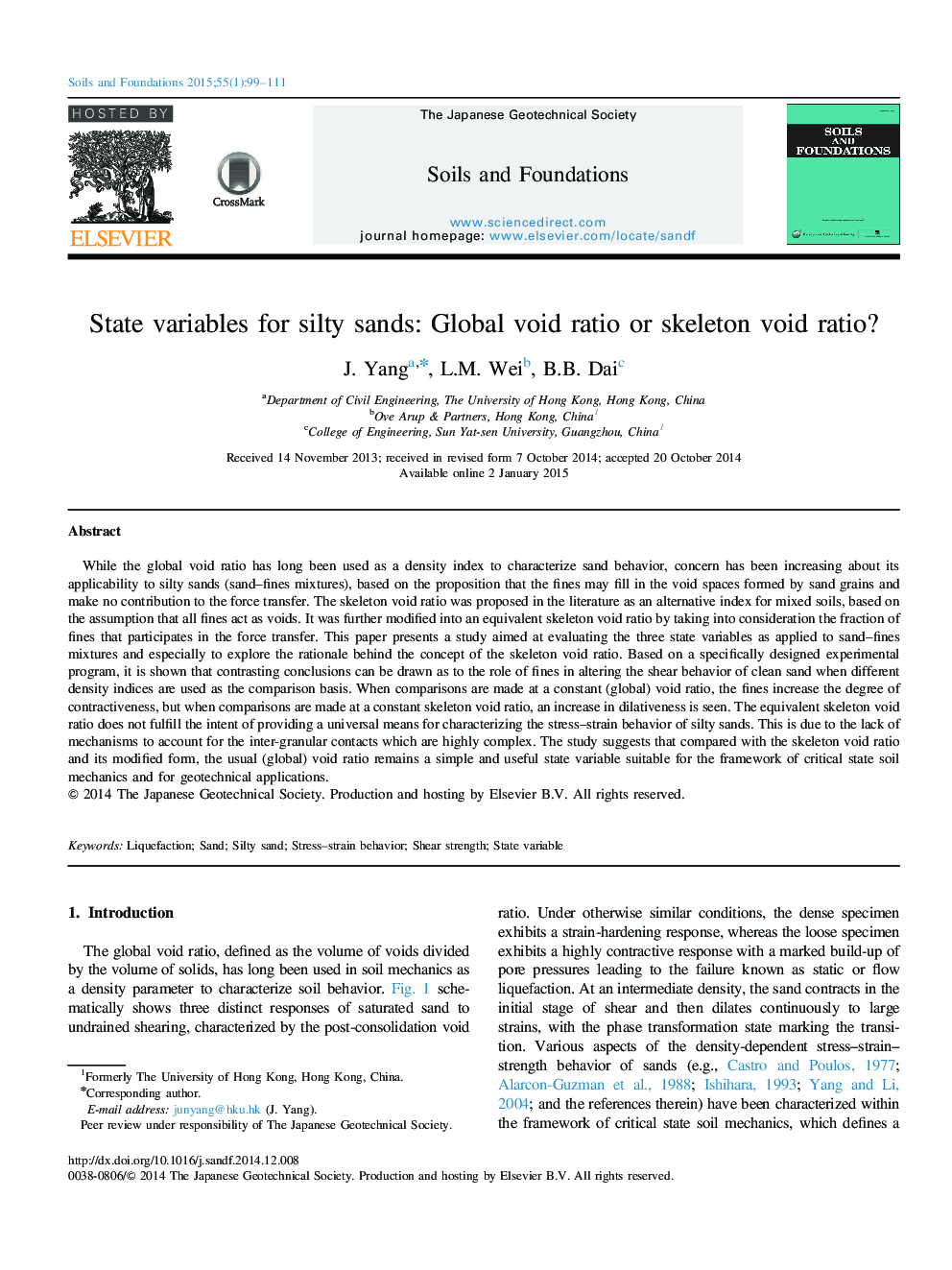| Article ID | Journal | Published Year | Pages | File Type |
|---|---|---|---|---|
| 307120 | Soils and Foundations | 2015 | 13 Pages |
While the global void ratio has long been used as a density index to characterize sand behavior, concern has been increasing about its applicability to silty sands (sand–fines mixtures), based on the proposition that the fines may fill in the void spaces formed by sand grains and make no contribution to the force transfer. The skeleton void ratio was proposed in the literature as an alternative index for mixed soils, based on the assumption that all fines act as voids. It was further modified into an equivalent skeleton void ratio by taking into consideration the fraction of fines that participates in the force transfer. This paper presents a study aimed at evaluating the three state variables as applied to sand–fines mixtures and especially to explore the rationale behind the concept of the skeleton void ratio. Based on a specifically designed experimental program, it is shown that contrasting conclusions can be drawn as to the role of fines in altering the shear behavior of clean sand when different density indices are used as the comparison basis. When comparisons are made at a constant (global) void ratio, the fines increase the degree of contractiveness, but when comparisons are made at a constant skeleton void ratio, an increase in dilativeness is seen. The equivalent skeleton void ratio does not fulfill the intent of providing a universal means for characterizing the stress–strain behavior of silty sands. This is due to the lack of mechanisms to account for the inter-granular contacts which are highly complex. The study suggests that compared with the skeleton void ratio and its modified form, the usual (global) void ratio remains a simple and useful state variable suitable for the framework of critical state soil mechanics and for geotechnical applications.
